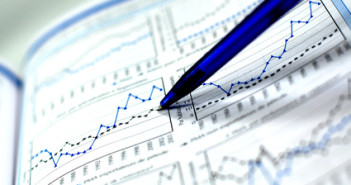Currency pairs differ from each other: some move slowly and others quickly. Some have better spreads on your broker’s platform and some have worse. And some seem to be more predictable than others when it comes to the charts. Most forex traders rely on technical analysis and a pair that “follows the rules” is easier to trade. Such a pair would either slow down and retreat ahead of a key level of support or resistance. Conversely, it would break with momentum, leaving dust behind it. The less predictable pairs trade choppily and cause headaches.
The predictability of currency pairs changes with the times due to various factors: seasonality, fundamentals, etc. As we approach the final quarter of 2017, here is a ranked and updated list for the most predictable currency pairs.
AUD/USD: After a long period of range trading around 0.80, the pair may be ready to pick a trend. And that is when we have the Aussie at its best. The pair tends to respect channels. It either rides the uptrend or slips predictably down. This comes in addition to respecting lines of support and resistance. The pair returns to top the list.
USD/CAD: The loonie had an exciting Q3 and this is set to continue: the pair got an upgrade in the list. Higher volatility continues helping its technical behavior. The regular factors such as oil prices (an OPEC meeting is due in Q4) and speculation about rate hikes are joined by uncertainty about NAFTA. As aforementioned, the pair excels with volatility and is not that great when things slow down. However, it tends to “mark” the top or bottom of the range quite quickly, and then trade in a confined manner, until the next break.
GBP/USD: Cable was absent from the list last time, but the fundamentals in the fourth quarter provide room for volatility. Sure, wider stops are needed in pound/dollar in comparison to euro/dollar. Nevertheless, the combination of intense Brexit talks, the prospects of a rate hike and the uncertainty in the British economy all provide room for movement. In Q4, these movements could provide room for action and to great respect for old and new lines of resistance. Contrary to the A$, diagonal trendlines are less predictable.
EUR/USD: While the pair had a good Q3, things could become messy in Q4, albeit still above average in terms of predictability. The world’s most popular currency pair often has too many moving parts, and this could make it more choppy, especially come year-end. Nevertheless, the pair “remembers” old lines as well as more recent ones and seems immune to big shocks. It is set to move in a slower manner in the last quarter.
NZD/USD: Kiwi/dollar closes our list once again. Volatility is on the rise thanks to a hung parliament and uncertainty about monetary policy. Its respect for support and resistance lines is not as great as other currencies, but the pair’s behavior remains positive.
Do you trade these currency pairs? What do you think?
Here are a few that did not make the list:
USD/JPY: The ongoing tensions with North Korea cause jitters at unexpected times and it can “totally destroy” the trades, to paraphrase Trump. The high volatility is set to continue, but in this pair’s case, it is not a good thing.
USD/CHF: The SNB continues intervening, especially as the franc attracts safe haven flows once again.
EUR/GBP and GBP/JPY: These popular crosses have become messier once again. Perhaps they could return to the list in 2018.
Here are the previous lists, from Q3 2017 and Q2 2017
And you may also be interested in the top 63 Twitter accounts to follow for forex traders.
